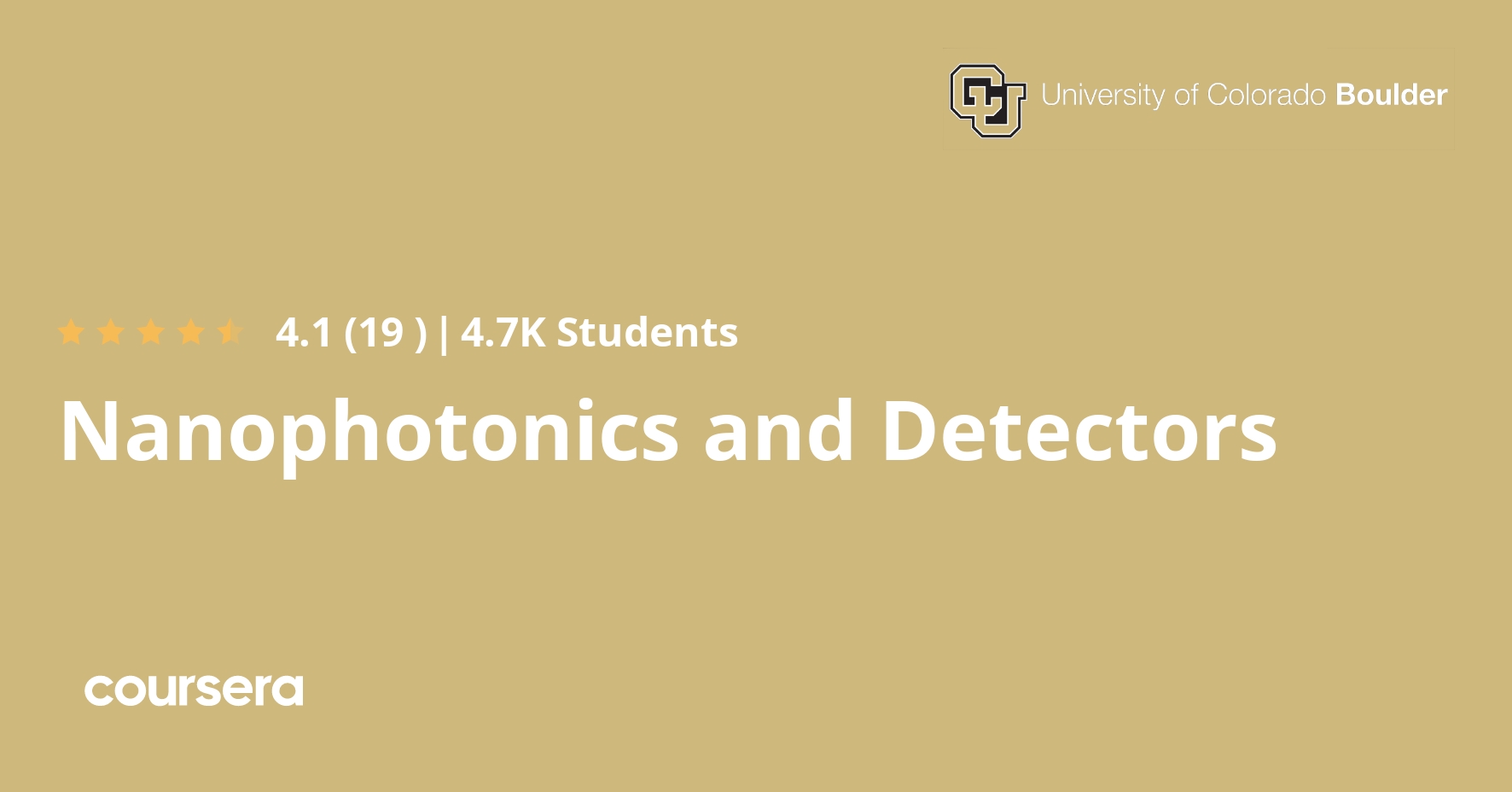Description
This course can also be taken for academic credit as ECEA 5606, part of CU Boulder’s Master of Science in Electrical Engineering degree.
Nanophotonics and Detectors Introduction
This course dives into nanophotonic light emitting devices and optical detectors, including metal semiconductors, metal semiconductor insulators, and pn junctions. We will also cover photoconductors, avalanche photodiodes, and photomultiplier tubes. Weekly homework problem sets will challenge you to apply the principles of analysis and design we cover in preparation for real-world problems.
Course Learning Outcomes
At the end of this course you will be able to…
(1) Use nanophotonic effects (low dimensional structures) to engineer lasers
(2) Apply low dimensional structures to photonic device design
(3) Select and design optical detector for given system and application
What you will learn
Quantum Cascade Lasers
The course covers the basics of nanophotonic light emitting devices and optical detectors, including metal semiconductor, metal semiconductor insulator, and pn junctions, photoconductors, avalanche photodiodes and photomultiplier tubes. Low dimensional structures enable an entirely new class of devices. Join me on a journey to understand how this happens and explore powerful examples of successful technologies such as the quantum cascade laser.Module 1 will cover the quantum cascade laser, a laser design based on intersub-band transitions, that enables very long wavelength lasers. It will also talk about lasers that operate on intraband transitions, using low dimensional structures, which enable further control over carrier concentrations.
Confined photons
In this unit, we will learn how to confine photons just as we do with electrons. This gives us power over the allowed modes of emission, allowing us to enhance the performance of lasers as well as develop ‘threshold-less’ lasers. I hope you enjoy this exciting topic as much as I do.
photonic detection
In this module, you will learn about the basics of detection and the key performance metrics that are used to evaluate detectors including noise equivalent power and detectivity. This lays the building blocks for fundamental understanding, design, and use of different photonic detection technology. This is core information that should be in the wheelhouse of any photonics researcher or engineer.
metal insulator semiconductor structures
In this unit, you will learn about the fundamentals of how metal insulator semiconductor devices operate, their advantages and challenges they face. This information is particularly useful for understanding the operation of charge-coupled devices, discussed in the next section.






